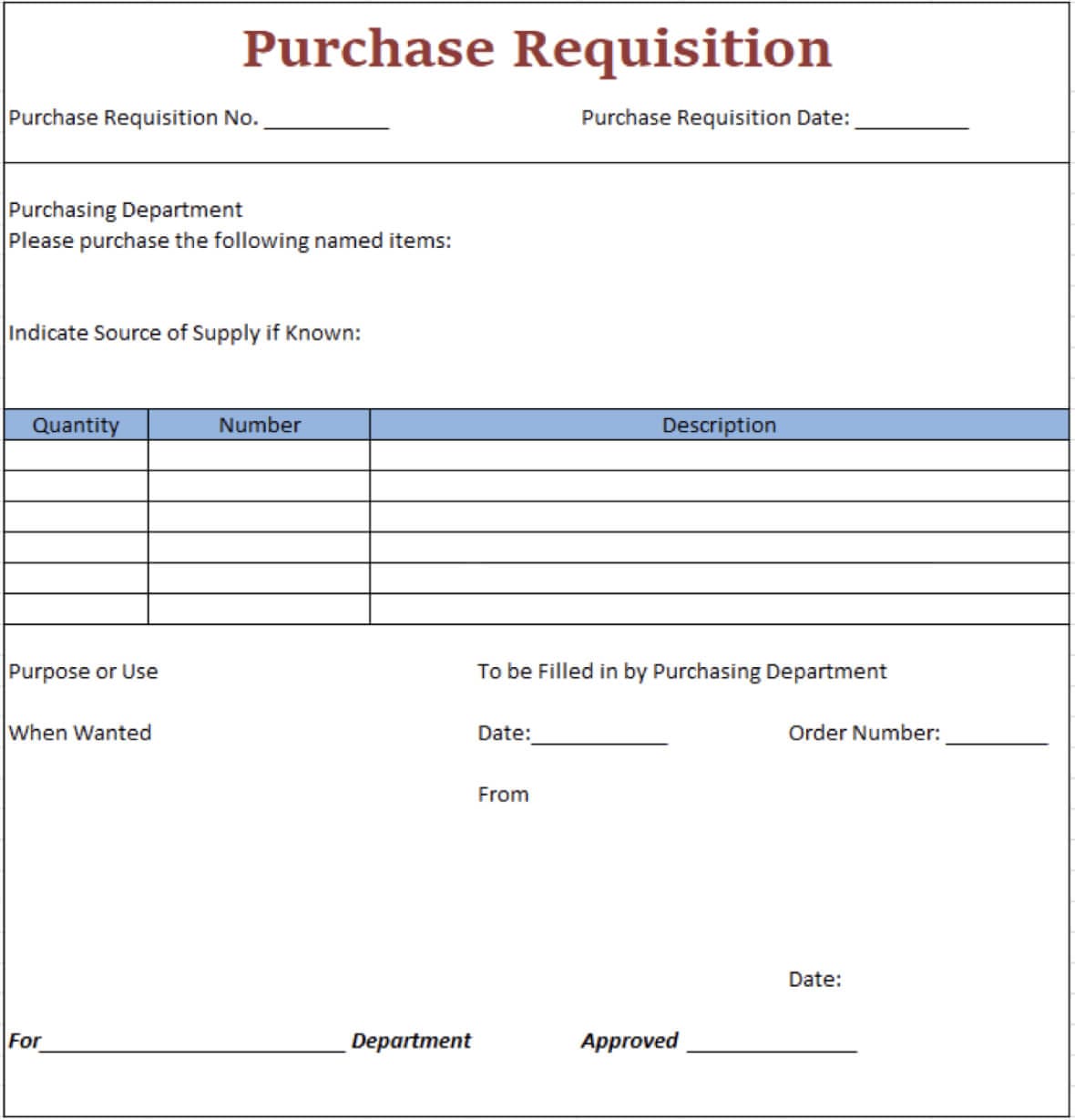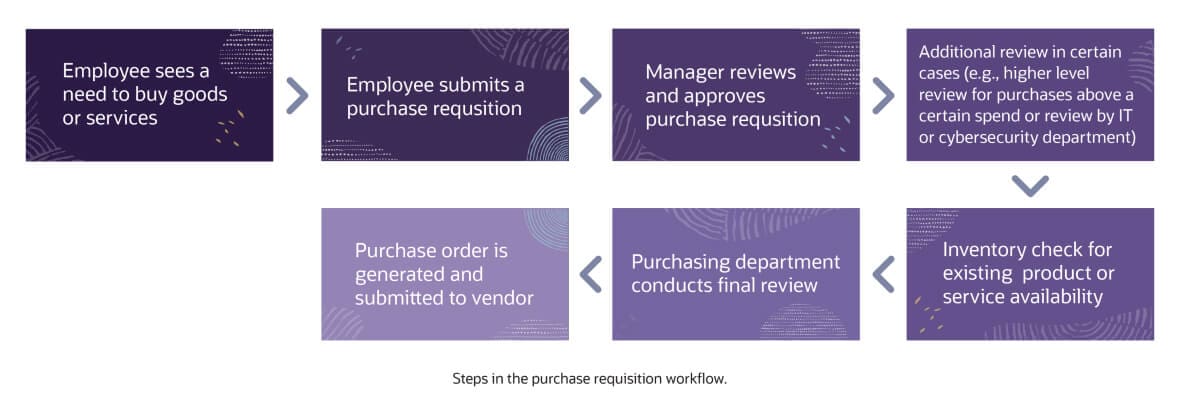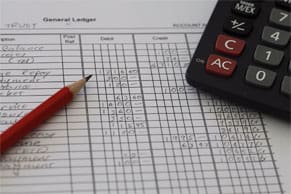All businesses need to make a variety of purchases, from raw materials and office supplies to technology services. A clear procurement process helps businesses manage these expenses effectively, and purchase requisitions are an important initial stage in that process. Rather than letting employees make buying decisions unilaterally, many businesses first require them to request the items they need by submitting a purchase requisition for internal review and approval. This helps ensure that employees only buy items that are necessary and comply with purchasing guidelines. It also helps prevent fraud and abuse and creates a clear record for accounting and audit purposes.
What Is a Purchase Requisition?
A purchase requisition is an internal document indicating the desire to purchase goods or services for the business. An employee fills out a purchase requisition and submits it to the appropriate individuals or departments for review and approval. Reviewers may include both the employee's line manager and the company's central procurement or purchasing department. Once the purchase requisition is approved, the business then issues a purchase order for the requested items to the appropriate vendor.

Purchase requisition vs. purchase order:
People often confuse purchase requisitions with purchase orders, but they actually are created at different stages in a business's procurement process. A purchase requisition is an initial internal request made by an employee who needs to acquire goods or services for the business. Once the purchase requisition is approved, a purchase order for the items is sent to a supplier. Unlike a purchase requisition, a purchase order (once approved by the buyer and supplier) is a legally binding contract that outlines exactly what the business intends to buy and for how much money.
Key differences
The key differences between a purchase requisition and a purchase order are as follows:
| Purchase Requisition | Purchase Order | |
|---|---|---|
| What it is | Internal request to make a purchase | Confirmation of an order |
| Who creates it | Any employee | Purchasing/procurement group |
| When it's created | At start of procurement process, when an employee sees a need to buy goods or services | When a business is ready to place an order for goods or services |
| Who receives it | Head of department, purchasing/procurement department and any other approvers | Vendor |
| What information it contains |
|
|
Key Takeaways
- A purchase requisition is the first step in a company's purchasing process.
- A purchase requisition is a request from an employee or department to buy goods or services. After internal review and approval, it is used to create a purchase order that is sent to a supplier.
- A purchase requisition process helps streamline procurement, control spending, prevent fraud and provide key documentation for financial audits.
- Automating purchase requisition workflows helps businesses reap benefits by eliminating slow, burdensome, error-prone manual processes.
Purchase Requisition Explained
The purchase requisition is an important step within a company's procurement process. It gives employees or their managers the opportunity to make the case for buying certain items or services, while ensuring that those purchases meet appropriate criteria.
As part of a well-defined purchasing workflow, the purchase requisition step reduces the risk of unauthorized purchases, overspending and fraud. It also creates visibility into future expenses across the business and helps create a clear audit trail.
Suppose the sales group wants to order new smartphones for its field team. Rather than having the sales leader simply place an order for 50 new devices or having sales professionals buy their own, the purchasing process requires the manager to submit a purchase requisition. The proposed purchase is then reviewed to ensure that it falls within the current budget and adheres to organizational purchasing guidelines.
Why Do Businesses Need Purchase Requisitions?
Incorporating purchase requisitions into a well-designed purchasing process confers a number of benefits for the business and its workforce. Here are some of the most important advantages:
-
Creates a clear process for employees.
A purchase requisition process helps formalize rules for who can purchase what, when and how. By implementing a purchase requisition step, a business creates clarity for employees, managers and procurement groups about how to handle purchases.
-
Makes purchasing more transparent.
Purchase requisitions promote greater transparency about which groups and individuals are purchasing what and why — especially when the requisitions are created electronically rather than on paper.
-
Streamlines procurement.
When implemented as part of a digital procurement workflow, a standard purchase requisition process can simplify and accelerate the overall process of buying goods and services.
-
Controls costs.
The approval process is an important step in preventing misspending or overspending. A purchase requisition typically must go through reviews to make sure it is accurate and reflects a real need. This review process helps ensure that purchasing requests make sense and fall within budget guidelines. In addition, by aggregating purchasing across the organization, businesses can negotiate with vendors for better prices and terms.
-
Deters or detects fraud.
A well-defined and -enforced purchase requisition process reduces the opportunity for rogue employees to buy items for personal use or collude with suppliers to defraud the business.
-
Aligns with purchasing guidelines.
Procurement groups can review purchasing requests to be sure they are directed to approved vendors and meet other company guidelines.
-
Prevents duplicate orders.
When a central purchasing function oversees all purchase requisitions, it improves the ability to spot duplicated requests for the same products or services coming from different people.
-
Increases accountability.
A purchase requisition creates a record that businesses can refer to if there are any issues — say, an order is lost or there's a dispute about exactly which items were requested by whom.
-
Provides documentation for financial audits.
Auditors may ask for evidence that purchasing requests were appropriately vetted and approved. Purchase requisitions can provide important information for that purpose.
How Do Purchase Requisitions Work?
Typically, when an employee needs a product or service, they fill out a purchase requisition form either online or on paper. The form requires entry of details such as a description and quantities of the goods or services being requested, the estimated price, the suggested vendor and the reason for the proposed purchase. The employee then submits the purchase requisition to the appropriate person or department for review and, with luck, approval.
Suppose the direct marketing manager at a regional bank wants to buy a new cloud-based email marketing tool. They fill out a purchase requisition indicating the software they'd like to purchase, the estimated cost, the vendor, the business need and anticipated benefits. The purchase requisition is then submitted to the appropriate department or individuals for review, each of whom needs to sign off on the request. The reviewers might include the director of marketing, who is the marketing manager's superior; the IT group, which may need to confirm that the purchase meets the organization's cybersecurity or other technology standards; and, ultimately, the purchasing department for final review or approval of the purchase requisition.
If any of the reviewers fails to greenlight the request, the requester will receive an explanation for that decision. If the purchase requisition is approved, a purchase order will be created and sent to the vendor, who then supplies a subscription to the software.
What Is Included in a Purchase Requisition?
A purchase requisition should provide all the information necessary for the purchasing group and any other internal reviewers to understand what needs to be purchased, who needs it and why. Providing clear and complete information can speed approval of the request. Here are some of the key points typically required in purchase requisitions:
-
Requestor.
This is the name of the employee who is filling out and submitting the requisition.
-
Department/delivery location.
This should indicate the department that will use the items ordered and a mailing address/delivery location for the items.
-
Requisition date and requested delivery.
This is the date the requisition was created and the date the items will be needed.
-
Description of the products or services requested.
This should include details of the items requested, such as stock/part/model number, manufacturer and product name. This helps the procurement group identify the right items for purchase.
-
Quantity requested.
This is the number of units needed.
-
Unit price.
This is the estimated price for each item.
-
Total price.
This is the total estimated cost of all requested items.
-
Business justification.
This is the reason for the purchase request (e.g., new hire, a scheduled replacement, equipment failure). In some cases, a business will provide a list of business justification codes from which to choose.
-
Suggested vendor/supplier.
This is the legal name of the suggested supplier, along with complete mailing address and telephone and fax numbers.
7 Steps in the Purchase Requisition Workflow
Some aspects of the purchasing requisition workflow will vary from business to business. For example, the steps involved in purchasing industrial equipment at a manufacturing company may be very different from those required to order office supplies at a car dealership. However, the following steps are common to the requisition workflow at many organizations:
-
An employee or group identifies a requirement.
The first step occurs when someone recognizes the need to make a purchase. An office manager wants paper towels for the break room, for example, or the facilities manager needs a new generator.
-
The employee completes and submits a purchase requisition form.
An employee fills out a purchase requisition form either manually or through a purchasing system. The form includes all the details needed to purchase the goods or services, as well as the business rationale.
-
The appropriate manager reviews the purchase requisition.
A manager or department head reviews the purchase requisition for accuracy, legitimacy and budget fit.
-
Additional approvers may review the request.
Some requests may need additional levels of review. For example, purchase requisitions for items whose value is above a predetermined threshold may need higher-level approval.
-
The inventory department checks for existing stock.
A stocktaking step ensures that if the products have already been purchased and are available, they are delivered to the requester. If none are in stock, the request is forwarded to the purchasing department.
-
The purchasing department performs a final screen.
The purchasing group conducts a final review of the request to confirm the business need, its compliance with the business's purchasing guidelines and that it has been correctly signed and authorized. If there is data missing, the request may be sent back for additional information. If the request is inappropriate or exceeds purchasing limits, the purchase requisition may be rejected and sent back to the requestor with the rationale for the decision.
-
The purchasing department generates a purchase order.
If the purchase requisition is approved, a PO is created and sent to the vendor. Upon vendor approval, it becomes a legally binding contract.

Challenges of Manual Purchase Requisition Workflow
While a primary goal of purchase requisition reviews is to control employee purchasing, it's vital that the process isn't so burdensome or slow that it impedes business operations. Making the purchase requisition workflow as efficient as possible benefits everyone: the business, its employees and its suppliers.
A manual purchase requisition process, however, can introduce almost as many problems as it solves.
-
Requesters and approvers can waste time looking for information, chasing down paper documents and dealing with errors.
-
Manual processes can be difficult to coordinate and offer little visibility into potential issues like duplicated requisitions and possible fraud.
-
Cumbersome manual processes can also slow the overall purchasing cycle, with a negative impact on business operations and performance.
Benefits of Automating the Purchase Requisition Process
Automating the purchase requisition process can eliminate time-consuming manual processes and help the business improve oversight and control overspending.
-
Automating the workflow saves everyone time and simplifies this important first step in the purchasing process.
-
Employees can quickly enter their purchase requests using standard templates and route their requests to the appropriate reviewers.
-
Digitizing the process also streamlines the entire purchasing workflow, speeds review and approval times, and reduces errors associated with manual purchase requisition processes.
-
Automating the process also increases visibility, enabling better insights into spending across the organization and easier identification of unnecessary or out-of-compliance purchases.
Purchase Requisition Example
The building manager responsible for operations and maintenance at an apartment complex finds that he needs to purchase a new electrical service panel to replace one that has been damaged by corrosion and is beginning to fail. The manager submits a purchase requisition form, using cloud-based purchasing management software. The requisition is then routed to the appropriate approver for review — in this case, the company's facilities director, who is the building manager's boss. The facilities director approves the purchase, due to the clear business need. Given the moderate cost of a new panel, the purchase requisition doesn't need to be reviewed by anyone higher up in the organization or by the finance department. The company checks to see if there's a previously purchased electrical panel available in existing inventory. If not, the purchase requisition is routed to the purchasing department for final review. At this point, the purchasing department may approve the request, ask for more information, alter the request (changing the sourcing, for example) or deny it. If the purchase requisition is approved, the procurement team creates a purchase order for a new panel from the chosen supplier.
How to Automate Your Purchase Requisition Workflow
Automating the purchase requisition workflow is often undertaken as part of a broader initiative to automate the entire procurement process. It involves analyzing the organization's current purchasing processes, selecting software that meets the organization's needs and customizing the software to streamline the process.
-
Assess your current purchase requisition processes.
Examine each step in the current process, looking for bottlenecks and pain points. Document what is working well and what isn't. Consider the ideal state you'd like to achieve — including the trouble spots you'd like to eliminate.
-
Evaluate purchasing software solutions.
Select software that has the capabilities and features that fit your purchase requisition needs. The software should be able to automate the purchasing process from requisition to purchase order, including routing and review at each step in the process. Ideally, the product should integrate with other key enterprise software, such as inventory and finance applications.
-
Select forms and workflow.
Typically, businesses can start by choosing predesigned templates and workflows provided by the selected software vendor, then adapt them to their needs.
-
Customize as needed.
Tweak the requisition forms, approval routing, notifications and other functionality to more closely fit your organization's needs.
-
Explore and implement automation.
Explore the automation capabilities at each step throughout the purchasing process. At a basic level, a digital template might automatically populate a purchase requisition with the requester's name, department, manager and date of the request. It may also perform all calculations to prevent manual errors. Some software can also check compliance with purchasing guidelines and automate routing based on specific conditions, such as sending all requests above a preset spending ceiling to the CFO.
Automate Your Procurement Process With NetSuite
Businesses can eliminate slow, error-prone and costly manual processes by automating requisitioning and purchasing with NetSuite Purchase Management. NetSuite automatically ensures that requisitions comply with the company's estimated cost guidelines, routes requests to the appropriate approvers, sends notifications at each step and updates transactions throughout the process. Organizations can create advanced workflows based on factors such as department budgets, location or item type. Cross-functional benefits of NetSuite Purchase Management include:
-
Greater cost control.
Structured requisitions and approval workflows eliminate unnecessary buying and provide better insight into business spending.
-
Better communication.
A transparent and clear purchasing process keeps requestors, approvers and suppliers informed at each stage.
-
Automated tracking.
Automatic reminders and notifications accompany purchase requests through the approval process.
-
Fewer errors.
The software ensures that all information is entered into requisitions before they are submitted. Once approved, that data is automatically converted into a purchase order and sent to the supplier, reducing the potential for manual data-entry errors.
-
Streamlined process.
Automating purchase requisition workflows saves requestors and approvers time and headaches.
-
Integration with core applications.
NetSuite Purchase Management is part of a suite of integrated cloud-based applications, so organizations can run their business on a single platform.
Conclusion
Purchase requisition is the critical first step in a well-thought-out and streamlined purchasing process. A well-designed purchase requisition process helps manage business expenses while ensuring that employees can purchase the goods and services necessary to improve business performance. Implementing the purchase requisition process can also help prevent fraud, create a clear audit trail, increase efficiency and enable greater visibility into spending.
Purchase Requisition FAQs
What is the difference between PO and PR?
A PO (purchase order) and PR (purchase requisition) are two important but distinct steps in purchasing products for a business. The purchase requisition is an internal document used to manage the purchasing process, while the purchase order is an external document sent to a vendor. When an employee sees the need to buy goods or services (say, office supplies or a focus group service), they first fill out and submit a purchase requisition. This is essentially a request for permission to make the purchase. If this request is approved, then a purchase order is created and submitted to a vendor.
Who prepares the purchase requisition?
An employee who needs to buy items for their job or department typically fills out the purchase requisition form.
What is the difference between requisition and purchase?
When submitting a purchase requisition, an employee is not actually purchasing goods or services. Rather, they are seeking permission to make the purchase. Only if the requisition is approved are the goods then purchased.









